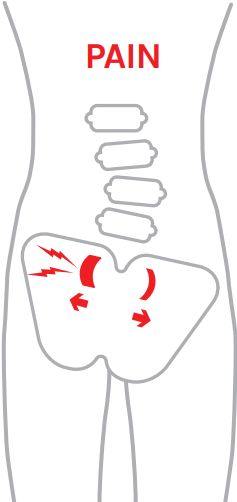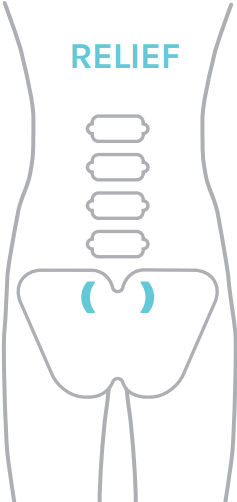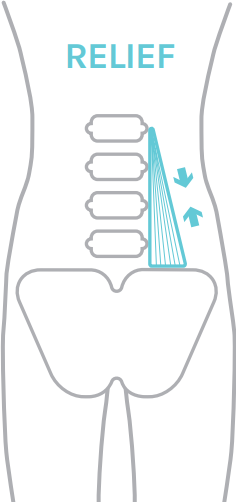Congratulations!
You have created your Rehabilitation Programme.
-
Thank you so much for filling out your back pain questionnaire. Through the answers you have selected, this has enabled us to tailor our response to your abilities and needs.
Your Video Report
Chris Aldred BSc (Hons) MCSP
Qualified in 2000 from Manchester University, School of Physiotherapy.
Special Interest: Lower Back Pain. Emotional health benefits on pain.
-
Below is some further information about what could be causing your lower back, buttock and leg issues. Scroll down further to find your tailored rehabilitation programme.
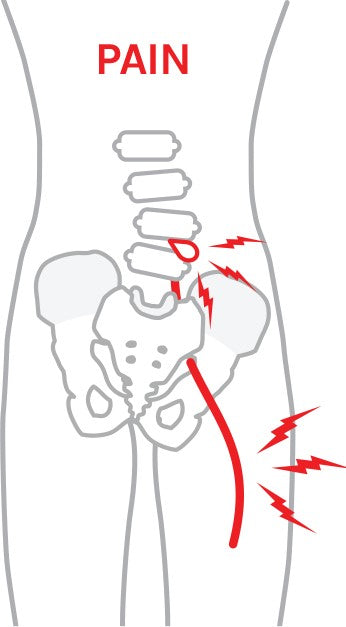
Disc Bulge
Your pelvis is the foundation to your spine, wherever the pelvis points the spine follows. Misalignment can result in more weight being pushed over to one side of the spine than the other. Discs in your spine can wear due to this excessive weight down one side, leading to bulging or full herniation (often called a slipped disc), which can compress the nerve. Aggravation of the nerve can be felt as pain in your back and can travel all the way down to your foot..
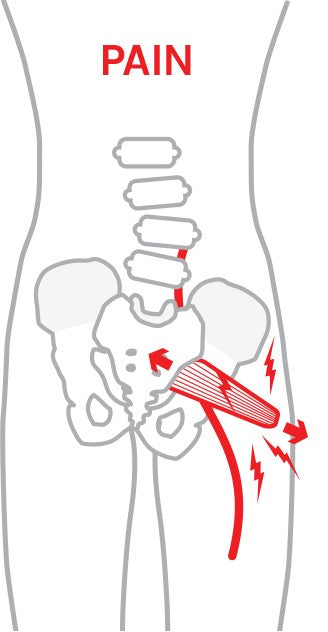
Piriformis Syndrome
Your piriformis is a muscle that externally rotates your hip. Misalignment can overly stretch the piriformis muscle. Your sciatic nerve runs very close to the piriformis and for about 15% of the population through it. This means that any deviation can result in compression of your sciatic nerve between your piriformis and the bony pelvis. Note: Sciatica is an umbrella term like “headache” there are many causes of a headache and in the same way many causes of sciatica.
Your Rehabilitation Programme
-
I stress to my patients that these 4 conditions are essential for good lower back health and freedom of the nerve roots and the sciatic nerve:
- Pelvic Alignment
- Sciatic and nerve root mobilisation
- Good glute activation and strength
- Good abdominal activation and strength
Weekly Increments
-
Week 1
- Sciatic Nerve Stretch
-
Week 2
- Piriformis
-
Week 3
- Glute Activation
- Transverse Abdominal
-
Start with Week 1 exercises, then add Week 2, finally add Week 3 – Then continue all the exercises for 6 week.
Only progress by adding the next week's exercises if you are getting no adverse reaction to the current week's exercises. Please do the exercises twice a day.
Week 1 - Sciatic Nerve Stretch
Please follow the recommended repetitions and sets stated on the exercise videos. If it feels like it is too much then reduce to 2 sets of 20 second holds .
If this still feels like it is too much, please stop doing the exercises.
Week 2 - Piriformis Stretch
Please follow the recommended repetitions and sets stated on the exercise videos. If it feels like it is too much then reduce to 2 sets of 20 second holds .
If this still feels like it is too much, please stop doing the exercises.
Week 3 - Gluteus Maximus Activation
Please follow the recommended repetitions and sets stated on the exercise videos. If it feels like it is too much then reduce to 2 sets of 5 repetitions.
If this still feels like it is too much, please stop doing the exercises.
Week 3 - Transverse Abdominal Activation
Please follow the recommended repetitions and sets stated on the exercise videos. If it feels like it is too much then reduce to 2 sets of 5 repetitions.
If this still feels like it is too much, please stop doing the exercises.









